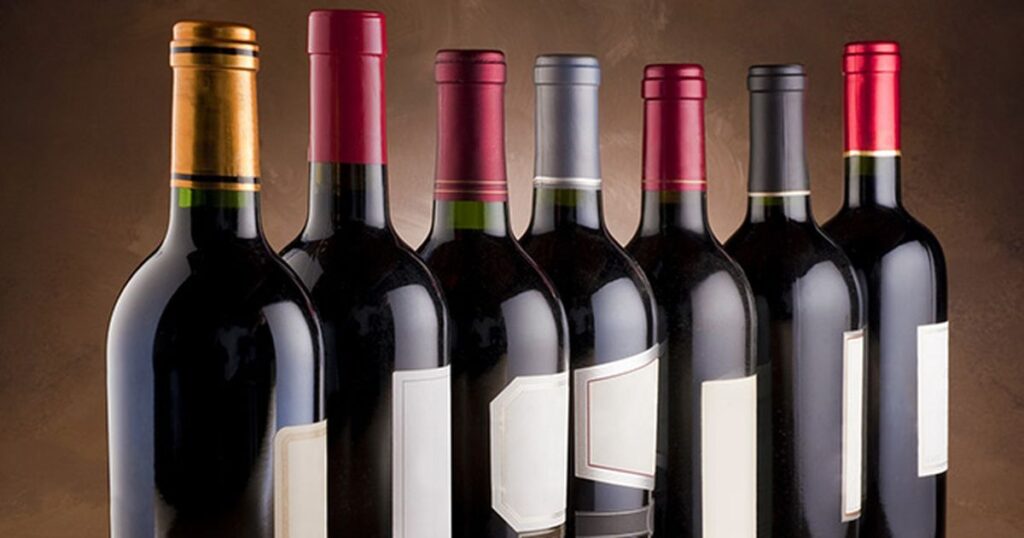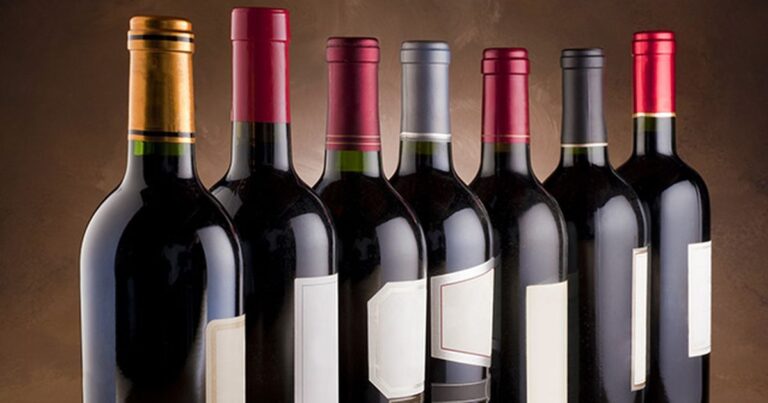
How-Many-Bottles-In-A-Case-Of-Wine-The-Real-Comparison
Table of Contents
ToggleHave you ever found yourself scratching your head in the wine aisle, wondering just how many bottles are in a case of wine? Whether you’re planning a party, stocking up for the holidays, or simply curious about wine packaging, this question often leaves even seasoned wine enthusiasts puzzled. 🤔🍷
The truth is, there’s no one-size-fits-all answer. While a standard case typically contains 12 bottles, the world of wine cases is far more diverse than you might think. Factors like bottle size, wine type, and even regional traditions can all play a role in determining case size. But don’t worry – we’re here to uncork the mystery and pour out all the details you need to know.
In this blog post, we’ll dive into the world of wine cases, how many bottles in a case of wine the real comparison of everything from standard sizes to the factors that influence them. We’ll also shed light on wine bottle measurements, discuss the benefits of different case sizes, and give you the inside scoop on purchasing wine by the case. So, grab a glass, and let’s embark on this wine-wonderful journey together! 🍇🥂
Standard Case Sizes![]()
The 12-bottle case
The 12-bottle case is the most common and traditional size for wine cases. This standard configuration offers several advantages:
-
Optimal storage: Easily fits in wine cellars and storage spaces
-
Variety: Allows for a good mix of different wines
-
Cost-effective: Often comes with bulk purchase discounts
Here’s a breakdown of a typical 12-bottle case:
| Bottle Type | Quantity | Total Volume |
|---|---|---|
| 750ml | 12 | 9 liters |
The 6-bottle case
The 6-bottle case has gained popularity in recent years, offering a more versatile option for wine enthusiasts:
-
Compact size: Ideal for smaller storage spaces
-
Lighter weight: Easier to transport
-
Sampling: Perfect for trying new varietals without committing to larger quantities
Other common case sizes
While 12 and 6-bottle cases are the most prevalent, other sizes cater to specific needs:
-
3-bottle case: Often used for gift sets or premium wines
-
24-bottle case: Popular for restaurants and large events
-
Mixed cases: Customizable options combining different bottle quantities
These varied case sizes provide flexibility for both consumers and businesses, accommodating different preferences and storage capabilities. As we explore further, we’ll delve into the factors that influence these case sizes and how they impact the wine industry.
Factors Affecting Case Size
A. Wine type
Different types of wine often come in varying case sizes due to their unique characteristics and production methods. Here’s a breakdown of how wine types affect case sizes:
| Wine Type | Typical Case Size | Reason |
|---|---|---|
| Red Wine | 12 bottles | Standard size allows for aging |
| White Wine | 12 bottles | Standard size, consumed faster |
| Sparkling | 6 bottles | Higher pressure, thicker glass |
| Dessert | 12 or 24 bottles | Smaller bottle sizes |
B. Bottle shape and size
The shape and size of wine bottles play a crucial role in determining case sizes:
-
Standard 750ml bottles: Usually packed in 12-bottle cases
-
Magnums (1.5L): Often come in 6-bottle cases
-
Half-bottles (375ml): May be packed in 24-bottle cases
-
Unusual shapes (e.g., Champagne bottles): Might require custom case sizes
C. Regional variations
Case sizes can vary significantly depending on the wine’s origin:
-
France: Often uses 12-bottle cases
-
Italy: May use 6-bottle cases for premium wines
-
Australia: Sometimes opts for 6-bottle cases due to weight considerations
-
United States: Typically follows the 12-bottle standard
D. Winery preferences
Individual wineries may choose different case sizes based on:
-
Marketing strategies
-
Production volume
-
Storage considerations
-
Shipping Efficiency
These factors combined influence the diverse range of wine case sizes available in the market. Understanding these variations can help consumers make informed decisions when purchasing wine in bulk or for storage purposes.
Understanding Wine Bottle Measurements

A. Standard 750ml bottles
The standard 750ml bottle is the most common wine bottle size, accounting for the majority of wine sold worldwide. This size is perfect for sharing between two to four people and is often used as the benchmark for wine pricing and comparisons.
| Bottle Type | Volume (ml) | Glasses of Wine |
|---|---|---|
| Standard | 750 | 5-6 |
B. Magnum and larger formats
Magnum bottles and larger formats are popular for special occasions and collectible wines. These larger bottles allow the wine to age more gracefully due to the reduced oxygen-to-wine ratio.
-
Magnum: 1.5 liters (equivalent to 2 standard bottles)
-
Double Magnum: 3 liters (4 standard bottles)
-
Jeroboam: 4.5 liters (6 standard bottles)
-
Imperial: 6 liters (8 standard bottles)
C. Half bottles and splits
Smaller bottle sizes are ideal for individual servings or when you want to sample different wines without opening full bottles.
| Bottle Type | Volume (ml) | Glasses of Wine |
|---|---|---|
| Half Bottle | 375 | 2-3 |
| Split | 187 | 1 |
These smaller formats are often used in restaurants, airlines, and dessert wines. They offer convenience and portion control, making them popular choices for casual wine drinkers and those who prefer variety in their wine selection.
Benefits of Different Case Sizes![]()
Storage efficiency
Wine enthusiasts and collectors often appreciate the benefits of purchasing wine by the case, particularly when it comes to storage efficiency. Different case sizes offer various advantages in this regard:
-
6-bottle cases: Ideal for small spaces or those with limited storage
-
12-bottle cases: Standard size, offering a balance between variety and space
-
24-bottle cases: Maximize storage efficiency for serious collectors
| Case Size | Storage Efficiency | Best For |
|---|---|---|
| 6-bottle | Moderate | Small spaces, casual drinkers |
| 12-bottle | Good | Most wine enthusiasts |
| 24-bottle | Excellent | Serious collectors, large cellars |
Aging potential
The size of a wine case can significantly impact the aging potential of the wines within:
-
Larger cases (12-24 bottles) provide more consistent aging conditions
-
Smaller cases (6 bottles) allow for more frequent rotation and inspection
-
Mixed cases offer the opportunity to age different wines simultaneously
Cost considerations
Purchasing wine by the case often comes with financial benefits:
-
Bulk discounts: Many retailers offer price reductions for case purchases
-
Reduced packaging costs: Fewer materials used per bottle when bought in cases
-
Lower shipping fees: Consolidated shipping for multiple bottles
Variety and sampling
Different case sizes cater to various preferences for variety and sampling:
-
6-bottle cases: Perfect for trying new wines or varieties
-
12-bottle cases: Ideal balance between variety and commitment to favorites
-
Mixed cases: Offer the ultimate sampling experience across different wines
Now that we’ve explored the benefits of different case sizes, let’s delve into the practical aspects of purchasing wine by the case.
Purchasing Wine by the Case

Retail vs. wholesale pricing
When purchasing wine by the case, understanding the difference between retail and wholesale pricing can lead to significant savings. Retail pricing typically applies to individual bottle purchases, while wholesale pricing is often available when buying in bulk, such as in the case. Here’s a comparison of retail vs. wholesale pricing:
| Pricing Type | Typical Discount | Minimum Purchase | Availability |
|---|---|---|---|
| Retail | 0-10% | 1 bottle | Open to all |
| Wholesale | 10-30% | 1 case (12 bottles) | Often restricted |
Mixed cases
Mixed cases offer an excellent opportunity to explore different wines without committing to a full case of a single variety. Many retailers and wineries now offer:
-
Curated mixed cases based on themes (e.g., regional specialties, varietal showcases)
-
Build-your-own mixed cases, allowing customers to select individual bottles
-
Seasonal mixed cases featuring wines perfect for specific occasions or holidays
Wine club offerings
Wine clubs have become increasingly popular, providing regular shipments of curated wine selections. Benefits often include:
-
Discounted case pricing for members
-
Access to limited-edition or exclusive wines
-
Tasting notes and pairing suggestions
-
Flexibility to customize shipments or skip months
Customization options
Many retailers now offer customization options when purchasing wine by the case, such as:
-
Choosing the mix of red, white, and sparkling wines
-
Selecting specific vintages or vintner’s reserve bottles
-
Opting for all organic or biodynamic wines
-
Including accessories like corkscrews or wine glasses
Bulk discounts
Purchasing wine by the case often comes with attractive bulk discounts. These may include:
-
Tiered discounts based on the number of cases purchased
-
Special promotions during off-peak seasons
-
Volume discounts for large events or weddings
-
Loyalty programs offering increasing discounts for repeat customers
By understanding these aspects of purchasing wine by the case, consumers can make informed decisions and potentially save money while enjoying a diverse selection of wines.

A standard case of wine typically contains 12 bottles, but variations exist depending on factors like bottle size, wine type, and regional practices. Understanding these differences can help wine enthusiasts make informed purchasing decisions and maximize storage efficiency.
Whether you’re a casual drinker or a seasoned collector, buying wine by the case offers numerous advantages, including cost savings and convenience. As you explore different case sizes and bottle measurements, remember that the ultimate goal is to enjoy your wine. Consider your storage space, consumption habits, and preferences when deciding on the ideal case size for your needs.







